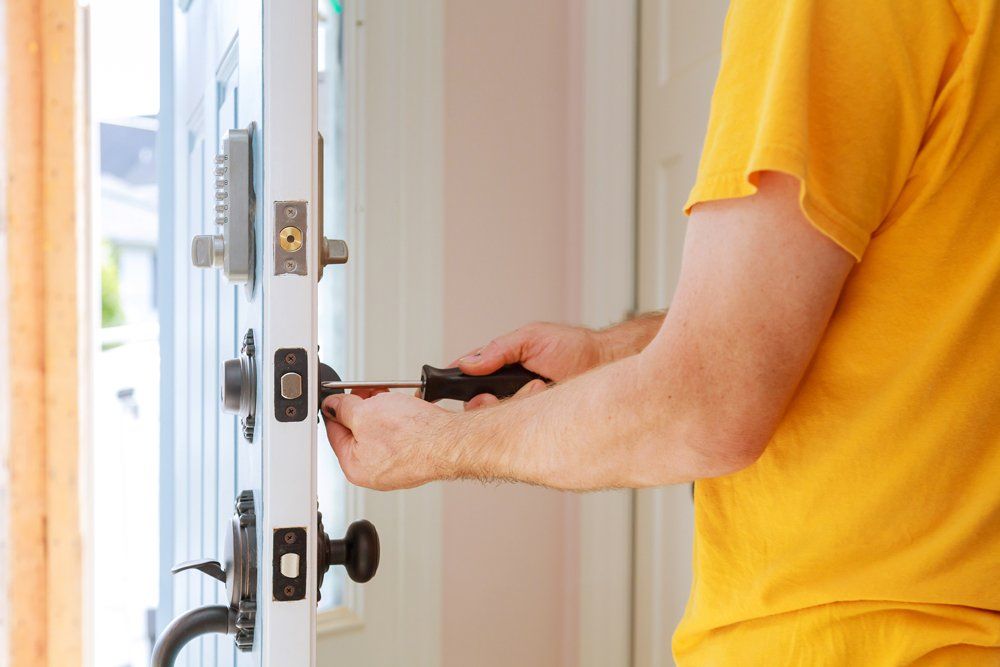CALL US NOW! 713-643-5767
Se Habla Espanol
High Security Locks
High Security Lock Installation and Repair in Houston
There are some situations where a standard, run-of-the-mill lock simply won’t do. High security locks
are designed to be pick and bump proof, and are ideal for doors in commercial building, healthcare facilities, pharmacies or even exterior and interior doors in the home that protect particularly valuable items or data. If you have any door that you believe is at a high risk for brute-force entry, investing in a high security lock is likely the way to go.
Many homeowners prefer to know their home’s exterior doors are bump proof and pick proof and choose to install high security locks on all their exterior doors, which is something Dixie Safe & Lock Service Inc.
can help with.
What Is Lock Bumping?
Lock bumping has long been a strategy used by locksmiths to get people back into their homes or businesses when they’ve been locked out. Unfortunately, this same strategy inevitably made its way into the hands of thieves and burglars.
Lock bumping requires what’s known as a “bump key.” These specialized keys are produced by lock manufacturers for use by locksmiths, but enterprising burglars have also figured out how to file their own bump keys out of blank keys.
The burglar puts the bump key into a deadbolt lock and taps on the key with a hammer while making incremental turns towards unlocking it, which gradually drops the pins in place to allow the door to be unlocked.
The bump strategy works on most current standard residential pin-and-tumbler locked doors.
Some bump proof locks are designed with abnormally shaped keys so a burglar with a traditional bump key won’t be able to use the strategy on the lock. Digital and biometric entry systems that do not have a backup key slot are also bump and pick proof by their very nature. However, many modern digital locks do have that backup key slot which often leaves it vulnerable to traditional bumping and picking strategies.
Dixie Safe & Lock Service Inc. also installs BumpGuard locks that utilize a side-locking bar rather than the pin-and-tumbler mechanism used in traditional deadbolt locks. These too will provide protection from a burglar with a key ring of 10 or so bump keys, which in most cases grants the burglar access to about 90 percent of residential deadbolts.
Pick-Proof Locks
Saying a traditional keyed lock is entirely pick proof is something of a misnomer. Given enough time, skill and experience a master locksmith-level burglar could likely develop a strategy using a drill or other lockpicking tools to get past the lock. Pick-proof locks do however offer significantly more protection when compared with traditional deadbolts and are much more difficult for a burglar to get past. It’s safe to say that the average burglar will not be able to simply pick a pick-proof lock.
Again, purely keypad locks or biometric locks without the backup key slot will also be pick-proof and would require a burglar to have sophisticated hacking knowledge to circumvent. Although those skills are still rare among burglars, they are probably more prevalent today now that these technologies have been around for a while. There are all types of dangerous breaking and entering knowledge being spread on the Dark Web and other places on the internet.
If you are interested in digital locks, we can advise you on the types that are most resistant to hacking intrusion, especially those that aren’t vulnerable to Wi-Fi-related compromising security flaws.
High security locks are also available that allow you to grant unique passcodes to specific people. For example, you can program a code for your cleaners that only works between 9 a.m. and 10 a.m. on a specific day.
Get a High-Security Lock in Houston
If you’d like to learn more about high-security locks and how they can protect your home or business, contact Dixie Safe & Lock Service Inc. Our experts have been in the industry for decades and have kept up with all the changes in theft protection and home security. We would be happy to discuss high-security locks with you and give you a list of the pros and cons of each option.
Learn More About High-Security Locks in Houston
Call Our Friendly Security Experts at (713) 643-5767
Anytime, Day or Night!
-

Slide title
We had a great experience with Dixie Electronic! They arrived within 20 minutes and took care of the job promptly. Their employees are skillful and friendly. Overall, we recommend these guys.
– Carrie M.
READ MORE! -

Slide title
The service provided by this company was amazing. The guys who did the job were very professional and polite. These guys have earned my future business, would really thank you for helping me out in such a situation when I lost my car’s key.
– Karen K.
READ MORE!
CONTACT INFORMATION
7920 Gulf Freeway Houston, TX 77017
LIC #B02418
OUR LOCATION
Content, including images, displayed on this website is protected by copyright laws. Downloading, republication, retransmission or reproduction of content on this website is strictly prohibited. Terms of Use
| Privacy Policy








